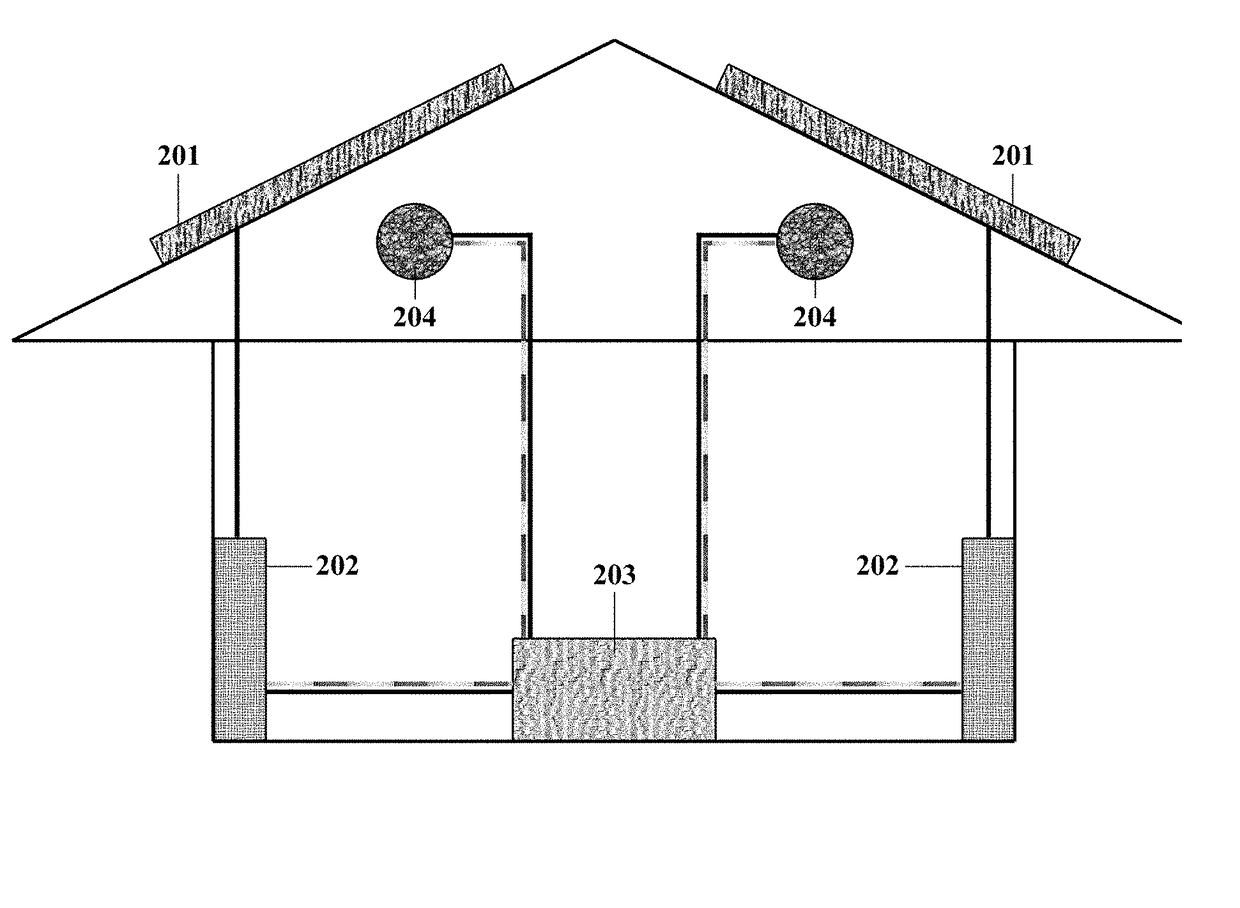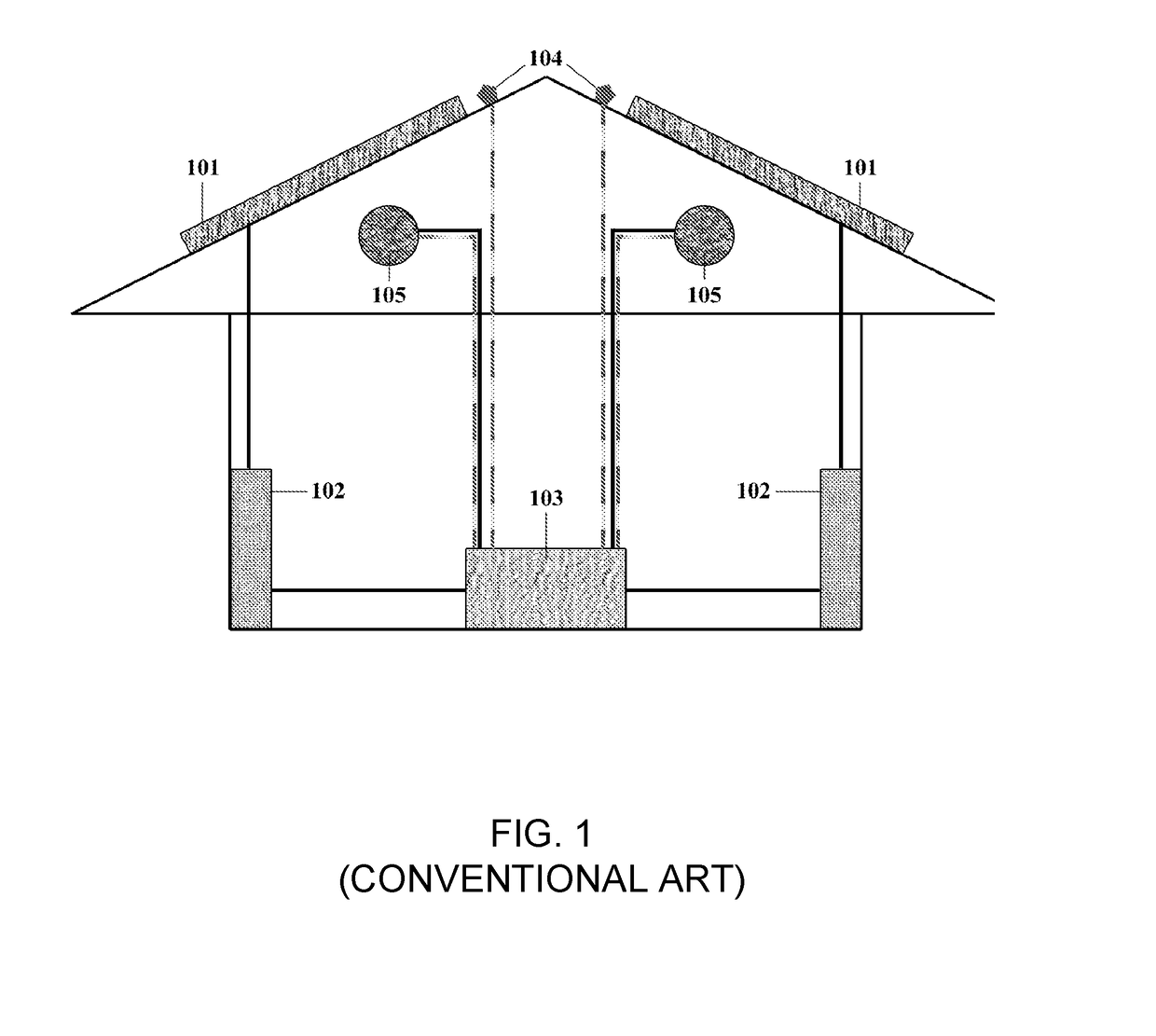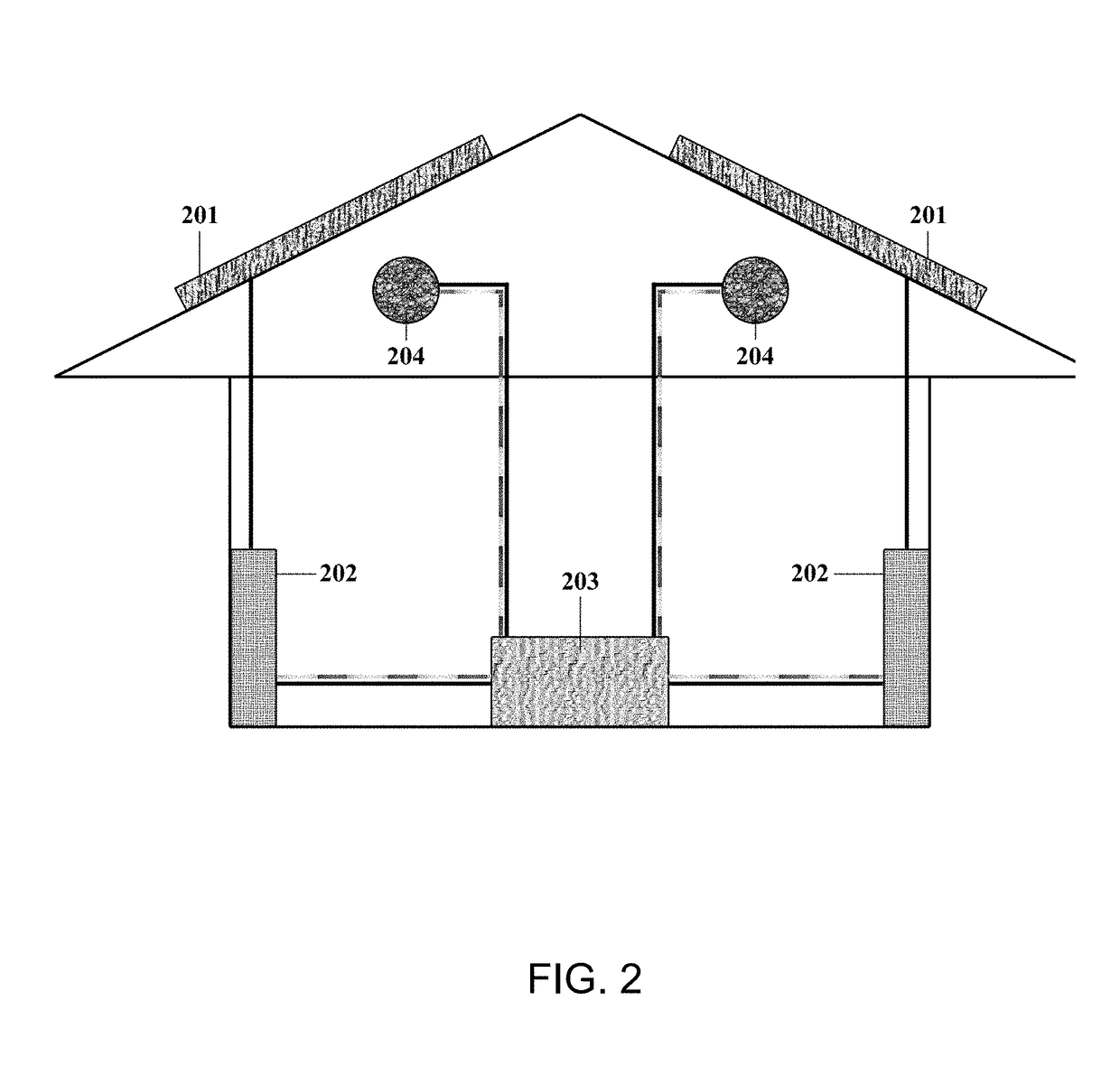[0007]In this way, the exemplary embodiments can combine power and sensor data generation into a single unit, thereby reducing the number, complexity, and cost of individual components, which simplifies the overall intelligent building energy management system as compared to conventional building energy management systems.
[0009]As explained above, due to the mounting global energy crisis, there is a continued focus on improving building design and engineering to reduce energy consumption and enable ‘smart’ energy use. In order for a building energy management system to intelligently respond to changing building conditions, a network of sensors may be required to provide the necessary data for the control system to react to. To provide all of the data needed to fully run such a smart building, a variety of sensors might be required, including but not limited to: temperature sensors, light intensity sensors, and wind (e.g., direction, intensity) sensors. While such sensors are readily available, the shear number of sensors that may be required to ensure a complete building map, combined with the dynamic building controls, can create a large and complicated building energy management system. Any way to combine or reduce the overall number of smart building elements (e.g., sensors or controls) could significantly reduce the overall complexity and cost of the system.
[0012]OPV devices are uniquely suited for BIPV applications due to their ability to have high visible light transmission (VLT), up to 70%, tunable absorption profiles, and their potentially low-cost, large-area production capabilities. The unique ability to tune the absorption profile of the absorbed materials in OPV devices has enormous benefits for semitransparent window BIPV applications. This allows the color, VLT, and spectral response of the OPV device to be altered for different applications, markets, and visual effects. This increases the flexibility and usability of the technology, and gives more options to designers and end-users. As with all solar technologies, cost is a major concern. The ability to produce OPV devices via low-temperature and atmospheric pressure high-throughput solution coating techniques enables potentially very low-cost manufacturing, which is critical to ensuring large-scale adoption of the technology. The use of this technology for power generation is the subject of several filings under the trade name SolarWindow™. This technology can also be harnessed for sensor data applications, as well, with or without power generation. The same properties that make OPV devices attractive for power-generating BIPV applications make them attractive for BIPV smart-building sensor applications; namely their high VLT, tunable color, and potentially low-cost production.
[0013]The present invention recognizes that conventional building sensors for use in intelligent building energy management systems add additional cost, complexity, and design restrictions on already complex systems. The shear number of building sensors required to adequately cover a building may result in excessively complex and expensive building energy management systems. By utilizing core smart-building PV components, such as roof-top power-generating PV arrays, low-power independent PV devices, power-generating BIPV units, or low-power BIPV devices as building sensors, the number of individual components and thus the overall complexity and cost of smart-building systems might be reduced.
[0016]More particularly, the present invention can provide a conventional roof-top PV array, made of any of a number of PV technologies, including but not limited to: crystalline silicon, thin-film inorganic technologies such as cadmium telluride, CIGS, or amorphous silicon, or OPV, wherein the PV array is tied into the intelligent building energy management system in such a way that in addition to providing power to the building, either to an energy storage system, a local microgrid, or the larger grid infrastructure, the output parameters of the array, either as a whole or from the individual modules or cells, is used as sensor data to provide information on the current building conditions, including but not limited to light intensity and ambient temperature. The parameters output from the array, modules, and / or cells, such as the voltage and current are necessarily already tracked, and so obtaining this information has no additional costs. This data can then be converted to useful building condition sensor information through comparison with benchmark values obtained under specific conditions, in the form of a calibration map that was performed as part of the array, module, and / or cell manufacturing quality assurance testing, or during system design and installation. A small number of auxiliary conventional building sensors could be used to further supplement and / or calibrate the PV sensor data. In such a way, an existing smart-building component, in this case a power-generating PV array, module, and / or cell, could also serve to provide useful building sensor information, contributing two elements of the intelligent building energy management system from a single component, decreasing system complexity and cost. Due to the generally large areas covered by conventional PV arrays, such combined PV-sensor systems could provide extensive information about building conditions, reducing the number of independent sensor elements required considerably.
 Login to View More
Login to View More 


